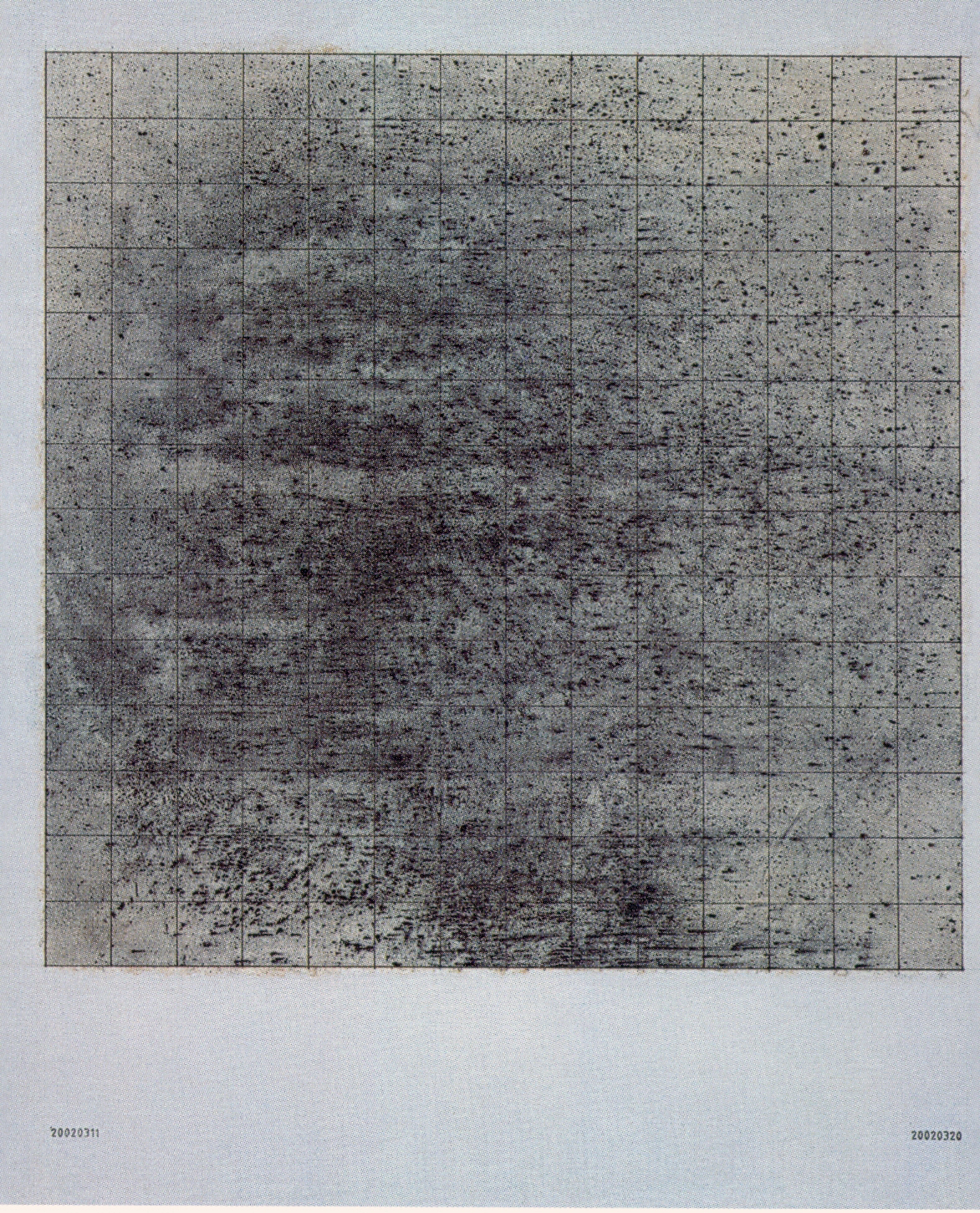
20020323-20020408, 2002
Norbert Pumpel
20020323-20020408, 2002
Bonded pigment chips, sepia, watercolour, acrylic, sarti chalk and rugen chalk
search


Norbert Pumpel
20020323-20020408, 2002
Bonded pigment chips, sepia, watercolour, acrylic, sarti chalk and rugen chalk
"For me, the paintings and drawings are autonomous communications on the phenomena that they address and simultaneously are. Reality functions aesthetically. Everything there idetermines this aesthetic function by being and being perceived as the world. Everything is equally significant and insignificant."
N. Pumpel February 2002
Through their apparent straightforwardness, Norbert Pumpel's works actually deny access to the viewer seeking to approach the works by way of this perceived straightforwardness. Piirnpel's works resemble Oriental stories that, through their fanciful elaborations, actually conceal more than they attempt to reveal
.
And still, Purnpel's works cannot be so defined. Even while Purrpel's works maintain a basic affinity to these tales, they lack the baroque exaggeration of Oriental narratives, as well as the opulent refinement of the object itself. Norbert Piirnpel's works are in no way a linear arrangement of concepts aiming for a single goal. Rather, they show a tendency toward the Oriental narrative technique of encircling a centre. Each individual work seems focused on a specific something. The necessity and presence of further works can be felt. And yet the succeeding work does not resolve the situation, and rather is itself embedded within a larger connection, without however revealing what this connection might be. Norbert Purnpel's works seem more to fill a space rather than to define a direction in that space.
The ability of these works to create space is not coincidental. The works resemble segments of an endless space. And yet this reference does not necessarily lead to a satisfying relief of the tension that resides in the works themselves. Perhaps a more appropriate description would be one rooted in the philosophical doctrine which contends that the space surrounding us does not have anything close to the expanse that it is generally considered to have. It is comprised rather of sources of reflection arranged at various distances and angles from one another. Few known universes are reflected here. These sources of reflections construct space in four dimensions; the distance from one another and to the viewer leads to a divergence of time, and thus creates the space of time. The reflected worlds lie in the space of reflection - captured and dreaming within scenes of their own history.
A correspondence to Norbert Piirnpel's works seems to lie hidden here. Purnpel's works also resemble mirrors in which worlds become trapped. These works can be viewed as being embedded in a space that reflects also them, from the most varying angles thus making them appear accessible to the viewer.
And yet, this access is denied. The apparent indivisibility of space - in whatever form - from Norbert Pumpers works causes the question, in the vein of Heidegger to arise; to what degree do these works consist of the clearing or emptying, that as a rule, defines space?
This becomes the starting point for Heidegger's theories on sculpture. Norbert Piimpel's medium is graphics. The graphic arts and sculpture are closely related. Both areas are concerned with the creation and with the forming of space, although the techniques used are different. The art of sculpture relies on materials that are appropriate for constructing spaces, or which themselves can be transformed into space. The graphic arts use the line, the point, light and shade in order to form and shape the object - in this case, the defined space. In Norbert Purnpel's works, the object is missing. His works, rather, are the object itself, which in its two-dimensional form reflects a four-dimensional reality. If Norbert Purnpel's graphic works are to be considered non-object art, then this term itself suggests the clearing or emptying of space from the object. The work becomes space itself. In its structures and through its structures it becomes clearly defined space.
And this is the exceptional and at the same time, surreptitiously puzzling factor about them.
Wolfgang Falch 2002 transl. Matt Savage